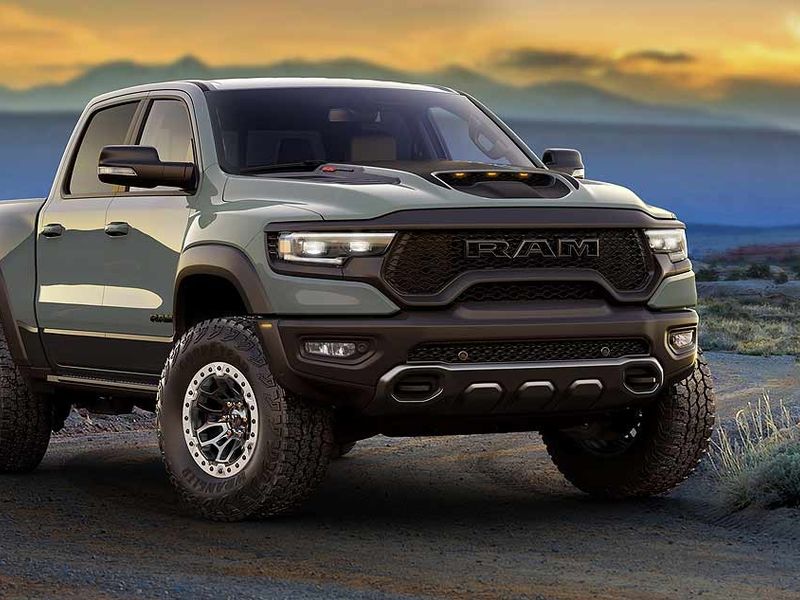
Ram topped the industry in the J.D. Power Initial Quality Study for the first time, while Stellantis stablemate Dodge landed in the No. 2 spot after last year becoming the first domestic brand to lead the ranking.
Another Stellantis brand, Jeep, jumped into the eighth spot to give the automaker three brands in the top 10 in the 2021 ranking.
Ram ranked 21st just two years ago. It then vaulted to No. 3 in 2020 and continued that momentum in the 2021 study. Dodge in 2019 rose to the top 10 for the first time before its first-place finish last year.
“What it boils down to is just a lot of hard work on the part of the Stellantis team throughout the organization to improve their quality,” Dave Sargent, vice president of automotive quality at J.D. Power, told Automotive News. “Maybe 10 years ago, it wasn’t the best. Five years ago, it was getting competitive, and now they’re one of the best in the industry, particularly on the Ram side.”
Sargent added: “Pickup trucks are not easy to build, [and] the Ram is loaded with content and lots of variations. They have a pretty tough life, with demanding customers. To be No. 1, when all you do is build pickups, is really pretty impressive.”
Mark Champine, head of North America customer experience at Stellantis, said in a statement that the strong showing “is not a data-point; this is a trend.”
Champine said that product design was key and that “if you start with strong design, and follow that up with discipline on the plant floor, you get the kind of results we’re seeing today.”
After Ram and Dodge, the upper ranks of the study were dominated by Asian brands, with Lexus sitting in a tie for third with Mitsubishi. They were followed by Nissan, Kia and Genesis, with Hyundai tying with Jeep for eighth place. Chevrolet and Mini tied for 10th.
Hyundai Motor Group had the most model-level awards, with seven, while Toyota Motor Corp. earned five awards and BMW tallied four model wins, including for the X7 crossover as the top-ranked large premium utility vehicle.
Mitsubishi continued its rise after finishing in sixth place last year, a major improvement from 2019, when it finished near the bottom. Mitsubishi may have been helped by having less bells and whistles than other models, as Sargent said there’s a market for more straightforward vehicles that aren’t as complex.
“Generally speaking, Mitsubishis are less expensive, lower-content vehicles,” Sargent said. “They typically don’t have all the latest technology on them, which is causing a lot of other automakers a lot of challenges. And so not having wireless smartphone mirroring, not having all the latest infotainment features, or the latest whatever features, that certainly means there’s less to go wrong.”
Tesla’s finish near the bottom is unofficial. The brand has consistently refused to grant J.D. Power permission to survey owners in 15 states, a requirement to participate. Still, the electric vehicle maker’s score improved from 2020, with 231 problems per 100 vehicles, 19 fewer than last year. Tesla’s score was calculated based on a sample of surveys from owners in the other 35 states.
J.D. Power tracks initial quality by measuring the number of problems experienced per 100 vehicles during the first 90 days of ownership, with a lower score reflecting higher quality. The company said the industry average of 162 problems per 100 vehicles is four fewer than in 2020, with 20 of 32 brands improving.
This year’s study, J.D. Power said, is based on responses from 110,827 purchasers and lessees of new 2021 model vehicles. The study asked 223 questions organized into nine vehicle categories (infotainment; features, controls and displays; exterior; driving assistance; interior; powertrain; seats; driving experience; and climate) designed to provide manufacturers with information to facilitate the identification of problems and drive product improvement.
Infotainment continues to be a drag on the industry, as the category accounted for 25 percent of the problems reported, the company said.
However, voice recognition wasn’t the main source of infotainment problems for the first time since 2011. This year, the most frequent infotainment issues stemmed from connectivity hiccups with Apple CarPlay and Android Auto, particularly when the systems are operated wirelessly.
“Specifically, what it was this year is with smartphone mirroring,” Sargent said. “So if somebody is trying to get Apple CarPlay or Android Auto to work on a vehicle by mirroring off of their phone, that is the problem. Bluetooth connectivity is actually not so much of a problem as it used to be.”

